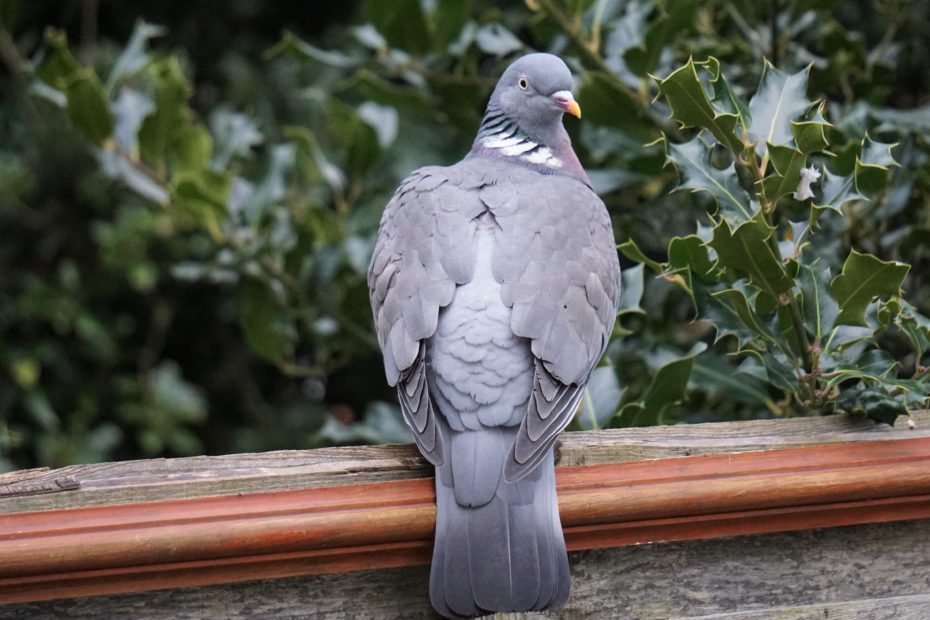Wood pigeons can be a significant nuisance to farmers and gardeners as they have a tendency to damage crops by feeding on them. To protect crops from wood pigeons, there are several methods that can be employed:
- Netting: One of the most effective ways to prevent wood pigeons from accessing crops is by using bird netting. Covering the crops with fine mesh netting creates a physical barrier, preventing the pigeons from reaching the plants. Ensure that the netting is securely attached to the ground to prevent the birds from finding their way underneath.
- Scare Tactics: Wood pigeons can be deterred by employing scare tactics. Scarecrows, reflective materials such as old CDs or aluminum foil strips, and even wind-powered devices that create movement and noise can help frighten the pigeons away. However, it’s important to change the position of these deterrents frequently to prevent the birds from becoming accustomed to them.
- Decoys and Predators: Placing decoy birds or predators around the crop area can trick wood pigeons into believing that the area is already occupied by potential threats. For example, setting up plastic owls or installing a scarecrow resembling a bird of prey can help deter wood pigeons from landing and feeding on the crops.
- Crop Rotation and Timing: Wood pigeons often prefer certain crops over others. By practicing crop rotation, where different types of crops are grown in different locations each season, you can disrupt the pigeons’ feeding patterns and reduce the damage they cause. Additionally, planting vulnerable crops later in the season when pigeons have moved on to other food sources can be advantageous.
- Sonic Deterrents: Sonic devices that emit distress calls or predator sounds can be effective in deterring wood pigeons. These devices simulate the presence of a threat, causing the pigeons to avoid the area. However, it’s important to use these devices sparingly to prevent the birds from habituating to the sounds.
- Chemical Deterrents: In some cases, chemical repellents can be used to discourage wood pigeons from feeding on crops. These repellents are typically designed to make the crops taste or smell unappealing to the birds. However, it’s essential to use such products carefully and follow the instructions provided to avoid any negative impact on the environment or human health.
While shooting wood pigeons is one way to address the issue of crop damage, it’s necessary to consider the legal and ethical aspects associated with this approach. The legality of shooting wood pigeons can vary depending on the country, region, and local regulations. In some areas, shooting wood pigeons may require specific permits or licenses.
However, it’s important to note that shooting wood pigeons as a crop protection method may not always be the most practical or effective solution. Factors such as the size of the crop area, proximity to residential areas or public spaces, and potential safety concerns need to be taken into account. Discharging firearms in populated areas can pose significant risks and may not be permitted.
Moreover, shooting as a means of crop protection may not be a sustainable solution in the long term. Wood pigeons are migratory birds, and their populations can rebound quickly if not properly managed. It’s often more effective to employ non-lethal methods that focus on deterring the birds from the crops rather than resorting to lethal means.
It’s crucial to consult with local agricultural authorities, wildlife management agencies, or conservation organizations to understand the specific regulations and guidelines regarding wood pigeon control in your area. They can provide guidance on the most appropriate and legal methods of protecting crops from wood pigeons while ensuring the well-being of both the crops and the birds.
It’s important to note that employing a combination of these methods often yields the best results. Additionally, staying vigilant and regularly monitoring the crop area for signs of pigeon damage allows for early intervention and minimizes the potential impact on crops.
